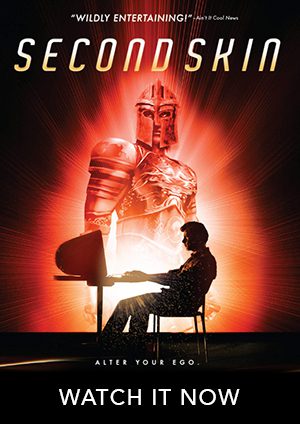Competitive gaming is becoming more and more popular. Whether it’s shooters like Halo or fighters like Street Fighter, more people are taking gaming seriously. The website for the MLG (Major League Gaming) Pro Circuit Controller states that for a pro gamer, a controller isn’t just a controller, it “is their life, the instrument with which they conquer their foes; a useful tool they cannot manage to be without.” As an up and coming competitor, I can attest to this. The question is, how is the MLG Pro Circuit Controller?
The MLG Pro Circuit Controller boasts several unique features, including slip-deterring rubberized grips and a robust braided cable. A first-rate cable is the key to a long-lasting electronic device. The cable of the MLG Pro Circuit Controller is through with a rugged and braided, which strengthen the integrity of the cable, and because it’s wired, there is no threat of latency or drop-out during play. The cable is 3 meters long, fully detachable and features a unique design to screw into the top of the controller.
Another of the MLG Controller’s features are its consistent analog sticks. Any gamer can tell you that analog sticks on a standard controller can be inconsistent, especially with usage. This can severely affect gameplay, and sometimes at the worst possible moment. The MLG Pro Circuit Controller has precise, accurate, thoroughly play-tested analog sticks. This ensure that the analog sticks are consistent, every time.
The MLG Pro Circuit Controller has several customization features, the first of which are removable top and side faceplates. These faceplates are magnetic and easily swappable, securely attaching to the controller, allowing players to skin their controller for personal preference. You are given your a choice in styles right out of the box, as faceplates in both matte and glossy finishes are included. You can also purchase additional faceplate kits (sold separately) to customize your controller so you can truly call it your own.
Another of the customization features is the ProModule system. Much like with BenHeck’s Access controller, the MLG Pro Circuit Controller is modular, this lets key components of the controller to be swapped as you see fit. Players can easily move the D-Pad and analog sticks to create your own personal layout. The MLG Pro Circuit Controller includes Xbox 360 and PS3-style analog sticks and D-Pads. Additional ProModule kits (also sold separately) provide a variety of colors, tensions, lengths and textures.
The PlayStation 3 version of the MLG Pro Circuit Controller has an additional feature: Reverse Trigger Mode, which easily swaps the functionality of the L1 & L2, and R1 & R2 buttons, regardless of whether or not it’s available in the game’s option menu. Although it’s strangely absent from the peripheral’s manual, this feature is easily accessed. Holding the start and select buttons for 5 seconds makes the swaps, which also inverts the controller’s assignment indicator lights to let the user know the swap is active.
The MLG Pro Circuit Controller also comes with its own carrying case. The ProCase has dedicated storage areas for every interchangeable component found on the MLG Pro Circuit Controller, which makes travel a breeze. Just zip up and go.
The MLG Pro Circuit Controller is a very sturdy product with a very thorough manual. With the exception of Reverse Trigger Mode, it tells you how to do everything. From how to swap out ProModules (which is a simple twist), to how to screw in the cable. Speaking of the cable, it is very durable — I have yet to be able to yank it out of the controller. With them being magnetic, the faceplates are easy to pop off and on. The controller also comes with weight cartridges to add more weight to the controller.
The buttons are a bit poppy, which may bother some players, but I rather like it, because it’s more of a tactile sensation. I’ve also switched out the PS3 analog sticks for the 360 ones, just because their conclave design more. Overall, the sticks are much more responsive than the ones on standard controllers.
My only real peeve with the MLG Pro Circuit Controller is that the shoulder buttons themselves are not modular, they’re locked to the controller, unlike the rest of the components. If we could put the shoulder buttons with the rest, it would make playing Skyrim so much easier for me.
You get a lot when you purchase the MLG Pro Circuit Controller. The product comes with: a manual; the Pro Circuit Controller body; two 3-Piece Pro Circuit Controller Faceplate Kits (in Gloss and Matte finishes); a L-Shaped Door for the back of the controller; a Weighted Door; two 35g Weight Cartridges; four analog stick modules (two PS3-style and two 360-style); 2 D-Pad modules (one PS3-style and one 360-style); a ProCable (3 meters long); and a ProCase. The 360 version also comes with headset adapter.
I would definitely recommend the MLG Pro Circuit Controller for any gamer who wants to step their game up. The price point isn’t that bad either, especially with everything you get. The controller is on sale now on the official MadCatz/MLG site, and has a MSRP of $99.99 USD.
Mad Catz Interactive, Inc. is a global provider of innovative interactive entertainment products marketed primarily under its Mad Catz, Cyborg, Tritton, Saitek, and Eclipse brands. Mad Catz also operates a video game content website under its GameShark brand, and distributes games and video game products for third parties. Mad Catz distributes its products through most leading retailers offering interactive entertainment products and has offices in North America, Europe and Asia. They graciously sent me a PS3 MLG Pro Circuit Controller for review, and I would like to sincerely thank them for doing so.




